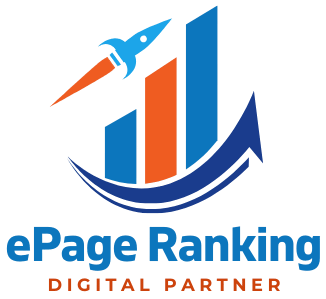
When someone types a query into Google, what exactly are they looking for? Are they hoping to buy something? Learn something? Compare options? The answer to that question is what we call search intent, and understanding it is a game-changer for any business that wants to rank well on search engines.
At Epage Ranking, we’ve seen firsthand how aligning content with search intent improves visibility, click-throughs, and most importantly — conversions.
In this blog, we’ll break down what search intent is, the different types, and why it’s a critical factor in modern SEO.
What is Search Intent?
Search intent, also called user intent, is the purpose behind a search query. It reflects what the user wants to achieve when they type something into a search engine.
For example:
- Searching “how to grow tomatoes” shows an intent to learn.
- Typing “best DSLR under 5000 AED” shows intent to compare before buying.
- Typing “Canon 200D price Dubai” shows clear purchase intent.
In each case, the keyword is just part of the story. The real value is in understanding why the user is searching in the first place.
Why Does Search Intent Matter for SEO?
Search engines, especially Google, now focus less on matching keywords and more on satisfying user intent. That means:
- If your page doesn’t answer what the user is really looking for, it won’t rank.
- Even if it does rank, it may not convert — because the content doesn’t meet the user’s expectations.
At Epage Ranking, we help businesses understand this distinction and optimize their content accordingly.
Some key benefits of aligning content with search intent:
- Higher rankings in SERPs
- Lower bounce rates
- Higher click-through and engagement
- Better conversion rates
The 4 Main Types of Search Intent
Understanding the different types of intent helps you craft content that truly meets user needs. Let’s explore the four most common ones:
1. Informational Intent
This is when users want to learn something.
Examples:
- “What is SEO?”
- “How to improve website speed?”
- “Benefits of organic farming”
These users aren’t looking to buy — at least not yet. They want helpful, clear information. If you serve this well, you build trust — and that trust turns into business down the line.
Best content formats:
- Blog posts
- How-to guides
- FAQs
- Educational videos
2. Navigational Intent
These users already have a specific site or brand in mind.
Examples:
- “Epage Ranking website”
- “Facebook login”
- “Nike UAE store”
They’re using Google like a shortcut. The goal here is to ensure your site ranks for your brand name, and your homepage or relevant landing page is optimized.
Best SEO move:
Have strong branded SEO — make sure Google associates your brand with the right pages.
3. Commercial Investigation
These searchers are considering their options before buying.
Examples:
- “Best SEO agencies in Dubai”
- “WordPress vs Wix for ecommerce”
- “Top smartphones under 3000 AED”
They’re in research mode, and you have a chance to influence their decision.
Best content formats:
- Comparison guides
- Top 10 lists
- Product reviews
- Case studies
4. Transactional Intent
These users are ready to take action.
Examples:
- “Buy SEO package Dubai”
- “Hire digital marketing agency near me”
- “Book online consultation Epage Ranking”
They want to make a purchase or complete a specific action. If your content or page isn’t optimized to convert, you’re missing a big opportunity.
Best content formats:
- Product/service landing pages
- Free trials
- Contact forms
- Booking CTAs
How to Identify Search Intent for a Keyword
Let’s say you’re targeting the keyword “SEO services Dubai” — how do you figure out what users want?
Here’s a simple process we follow at Epage Ranking
✅ 1. Google the keyword
Check the top-ranking pages:
- Are they blog posts or service pages?
- Are they guides, comparisons, or product listings?
Google is showing you what it believes best matches the intent. Use it.
✅ 2. Look at People Also Ask & Related Searches
These boxes give context around the query — what else users commonly ask or search in relation to it.
✅ 3. Analyze click behavior with tools
Use tools like Google Search Console, Ahrefs, or SEMRush to see:
- Which queries bring in the most traffic?
- What’s the average CTR?
- Are people bouncing or engaging?
This data helps you match content to intent better.
Aligning Your Content With Search Intent: A Few Tips
If you’re not sure whether your current content matches search intent, ask yourself:
- Is this answering the real question behind the keyword?
- If I searched this, would this page satisfy me?
- What kind of action does this content prompt?
Here’s how to improve the alignment:
🎯 Match content format to intent
- Informational intent = blog post
- Transactional intent = landing page
- Commercial intent = comparison or case study
🔍 Optimize headings and meta descriptions
Your meta title and description should reflect the intent, not just the keyword. If it’s a “how to” keyword, don’t make the meta read like a sales pitch.
📱 Include the right CTA
If users want to learn, offer more related content.
If they want to buy, give them a clear, direct CTA.
Real Example: Search Intent Optimization at Epage Ranking
A Dubai-based e-commerce brand approached Epage Ranking to boost traffic to their category pages. Previously, they were ranking with blog-style content for transactional keywords like “Buy organic skincare in UAE” — but bounce rates were high.
We analyzed the search intent, redesigned the landing pages with better product filters, clear CTAs, and minimal distractions. Within two months:
- Bounce rate dropped by 40%
- Conversion rate increased by 28%
- Page ranking moved from page 2 to top 5
That’s the power of aligning with intent.
Final Thoughts: Why It Matters More Than Ever
Google’s algorithms are getting smarter. It’s no longer about just having keywords on a page — it’s about providing what users are actually looking for.
Search intent isn’t a technical SEO trick — it’s about empathy. It’s about understanding your audience better than your competitors do.
At Epage Ranking, we don’t just optimize for clicks. We optimize for people.
Need Help With Your SEO Strategy?
Whether you’re a startup in Dubai or an established brand looking to expand, Epage Ranking is here to help you craft SEO content that connects with intent, drives quality traffic, and delivers real ROI.
👉 Get in touch with our SEO team and let’s build a search-friendly future — together
















